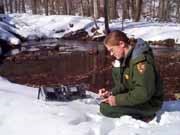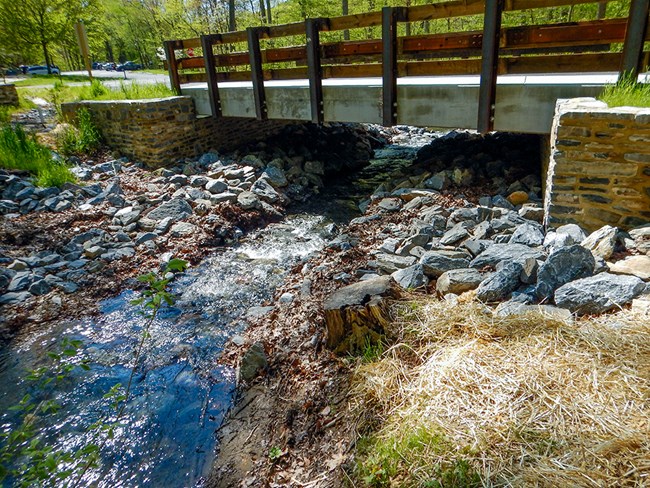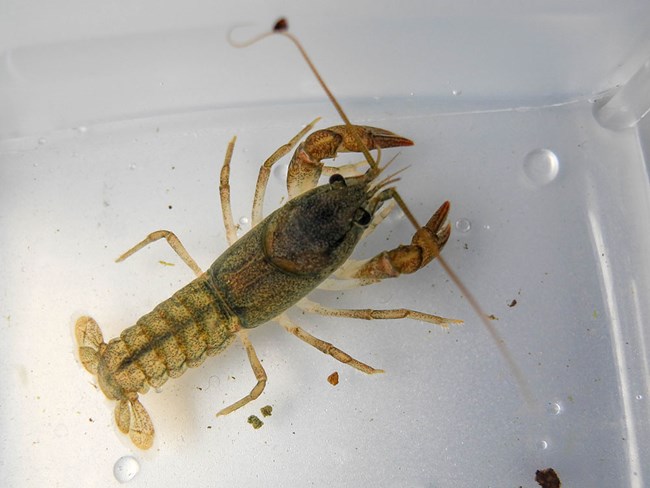
Volunteer John Zuke 
NPS R. Loncosky 
Volunteer John Zuke In 2002 Catoctin received funding to complete a more extensive stream water quality study. This two-year study examined surface water and stream sediments for heavy metals, pesticides, and bacteria concentrations in five stream locations. Results showed slightly elevated amounts of aluminum at one location. No other significant contamination was found at the remaining sites. 
Volunteer John Zuke 
Volunteer John Zuke Though water quality is generally considered good at Catoctin the current status of water quality and quantity in both Owens Creek and Big Hunting Creek warrants moderate concern. This concern is primarily due to rising stream temperatures and the presence of nutrients such as nitrates and phosphates at levels above those recommended for streams by the EPA. Further studies of stream chemistry using continuous loggers is currently being conducted by the National Capital Area Inventory and Monitoring team. Learn more by visiting Catoctin Mountain Park's Fish page. |
Last updated: May 22, 2020
